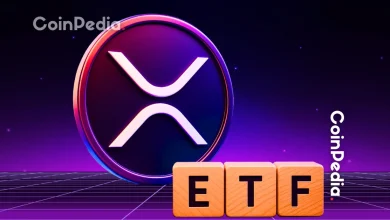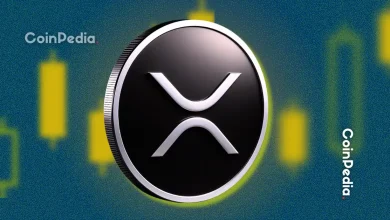
Ripple CTO David Schwartz shared a rare commit tree from XRP’s early development days.
The image shows how Ripple’s core was built with fast, messy, real-time code pushes.
The reveal offers a raw glimpse into Ripple’s origin story, sparking interest across the XRP community.
Ripple’s Chief Technology Officer, David Schwartz, has just peeled back the curtain on a never-before-seen snapshot of XRP’s earliest days. In what began as a casual exchange on Twitter, Schwartz ended up revealing a raw and rare artifact: a real commit tree from Ripple’s foundational development – messy, multi-colored, and completely unpolished.
First glance, it’s nostalgic for the Ripple fans. But it’s also a glimpse into how one of crypto’s most controversial and high-profile blockchains was actually built.
Let’s dive in.
Time for a Header Swap!
It all started when a user poked fun at Schwartz’s long-standing Twitter header – a dramatic quote about Ripple battling the legacy financial system.
Rather than brushing it off, Schwartz leaned in. He asked the community to suggest new banner images and casually dropped four options. One stood out immediately: a chaotic, spaghetti-like commit diagram that looked more like abstract expressionism than structured code.
The reaction was instant. When asked what the image was, Schwartz responded:
“That’s a real portion of the commit tree for rippled. It was carefully chosen to look as bad as possible.”
He then added a detail that offered a rare look into how Ripple’s protocol was actually shaped:
“Because Arthur and I coordinated frequently, we also pushed commits very frequently, even if they didn’t compile, so we could talk about what we were doing at that moment.”
Ripple Built XRP in Real-Time Chaos
In the early days, Ripple’s codebase wasn’t a polished, version-controlled product. It was a chat room for rapid-fire collaboration. Schwartz and co-founder Arthur Britto often committed incomplete code just to keep pace with one another.
- Also Read :
- Is American Express Secretly Using RippleNet Again?
- ,
The logs from this chaotic phase show usernames like JoelKatz (Schwartz), Britto, and MJK.
Schwartz noted that the commit stretch in the image was particularly unruly because both he and Britto were modifying nearby components at the same time – a scenario they usually tried to avoid.
A Rare Glimpse Into Real Engineering
Ripple is usually in the news for its legal battles or big partnerships. But this glimpse takes us back to when things were a lot simpler and a lot messier.
For XRP supporters, this snapshot is a reminder of how the project really began – built fast, with barely any structure, by a small team trying to make something new.
Never Miss a Beat in the Crypto World!
Stay ahead with breaking news, expert analysis, and real-time updates on the latest trends in Bitcoin, altcoins, DeFi, NFTs, and more.
Love it when the crypto community keeps it real!
FAQs
A “commit tree” in software development visualizes the evolution of a codebase, showing every saved change (“commit”) and how different lines of development merged. Ripple’s early commit tree appears chaotic because co-founders David Schwartz and Arthur Britto frequently committed incomplete code to facilitate rapid, real-time collaboration, treating the commit log as a communication tool rather than a polished version history.
While not a standard best practice for all software, some very early-stage blockchain projects, particularly those with a small, highly collaborative core team, might have committed incomplete or non-compiling code. This can occur when prioritizing rapid iteration and real-time communication among founders over strict version control discipline, as seen with Ripple’s initial development.
Yes, the XRP Ledger (XRPL) codebase, including its commit history, is open-source and publicly accessible. While David Schwartz revealed a specific chaotic “snapshot,” the full history of the rippled repository can be explored on platforms like GitHub, which host the project’s source code and development logs.
Trust with CoinPedia:
CoinPedia has been delivering accurate and timely cryptocurrency and blockchain updates since 2017. All content is created by our expert panel of analysts and journalists, following strict Editorial Guidelines based on E-E-A-T (Experience, Expertise, Authoritativeness, Trustworthiness). Every article is fact-checked against reputable sources to ensure accuracy, transparency, and reliability. Our review policy guarantees unbiased evaluations when recommending exchanges, platforms, or tools. We strive to provide timely updates about everything crypto & blockchain, right from startups to industry majors.
Investment Disclaimer:
All opinions and insights shared represent the author's own views on current market conditions. Please do your own research before making investment decisions. Neither the writer nor the publication assumes responsibility for your financial choices.
Sponsored and Advertisements:
Sponsored content and affiliate links may appear on our site. Advertisements are marked clearly, and our editorial content remains entirely independent from our ad partners.







